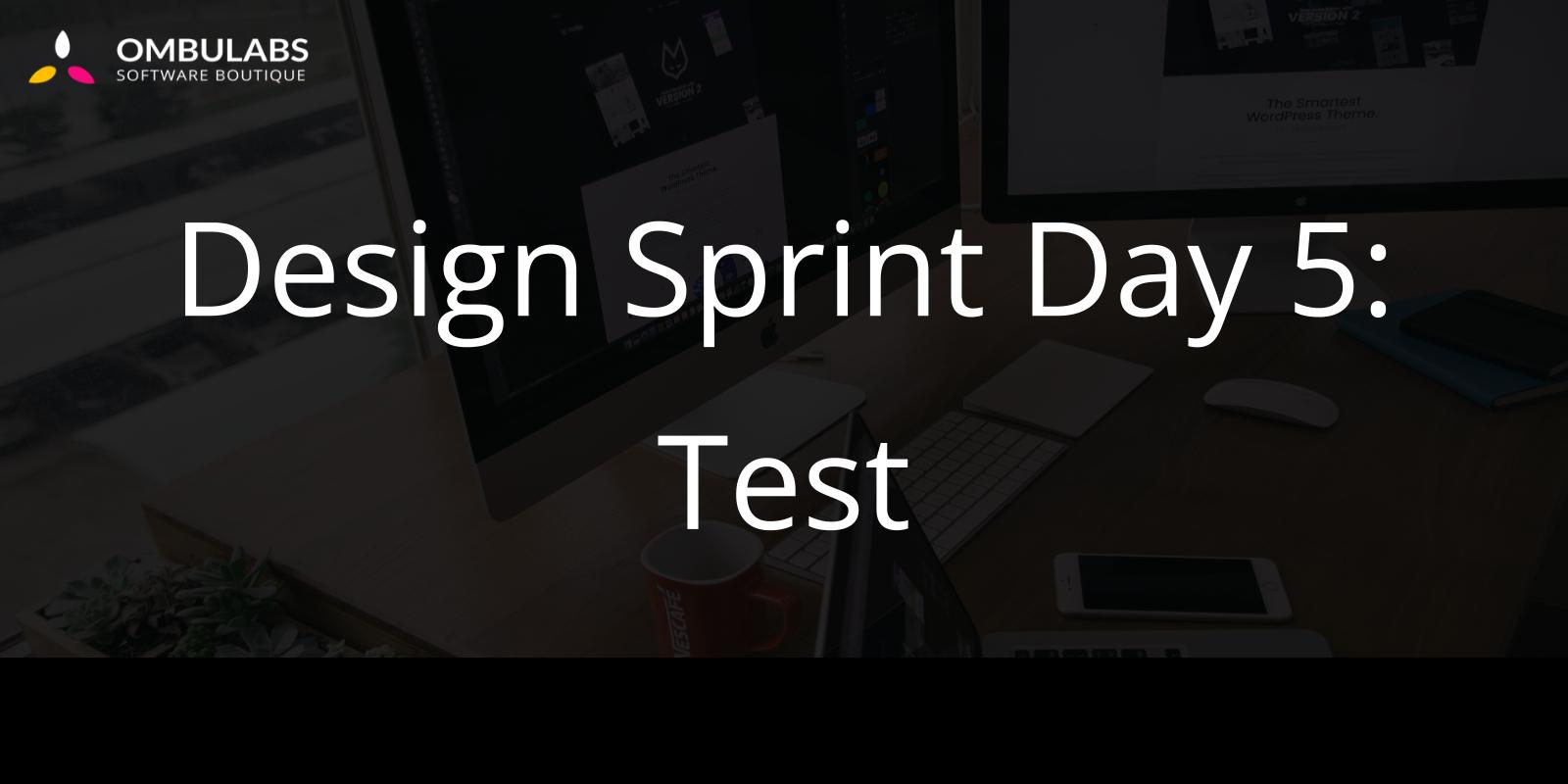
Design Sprint Day 5: Test
This is part of our series on design sprints . If you haven’t read our previous articles, I encourage you to read more about our design sprint process .
Day 5 of the design sprint is about testing your prototype and getting feedback on your ideas. That way, you can quickly learn what is or isn’t working about the concept. Yesterday, the interviewer spent time putting together a list of questions for the interview sessions. Earlier this week, your team recruited 5 participants for Friday’s research. Now you are ready to do the dang thing.
Design Sprint Day 5 - Test
Why do we test?
We test early with a low-fidelity prototype because it’s smart and far less expensive than waiting until something is built. It’s important to try to find test participants who are outside of your organization, or at least unfamiliar with the product. The Design Sprint can’t be considered complete before research is done, so get ready to find out how other people feel about what you’ve been working on all week.
Activity 1: Preparing for the Interviews
Identify Research Goals
What does the team hope to learn from these interviews? A high level goal of “Do people like this?” might become something like “What do people think about the solution? What are the positives and negatives? What do people like or dislike about our solution vs our competitor’s solution?
Writing the Interview Questions
-
Start with easy open-ended interview questions that align with your research goals, such as “How long have you been doing…”.
-
Only ask open-ended questions, no “yes/no” questions, nor “multiple choice” questions like “would you do x?”.
-
You can ask things like “What was the most useful part of this prototype? What was the least useful?”.
-
Avoid asking any questions that might lead a participant to a particular answer. You want to learn as much as possible in the sessions, so keep the questions open-ended. You’ll be surprised how much you learn.
-
When you have finished writing your questions, run a pilot version of the session with a team member.
Adjust as needed if you notice any hiccups.
Materials
-
A laptop: A video-enabled virtual meeting tool, like Zoom, Webex, or Google Hangouts that enables your participants to share their screen and your team to observe from their computers.
-
A link to the prototype (like a Google slides link or something like that).
Activity 2: The Interview
Notes for the Moderator
People will try to please you and will generally be kind in interviews, so assure them that you’d like them to be honest with their feedback. Make sure that your interviewees understand that you are not testing them, but rather that they are helping you test the prototype. Tell the interviewee that they are not under any scrutiny and that all difficulties or issues are useful information for the team and will help make the solution better. Plan for each interview should take about 30m or so, depending on how many questions they will be asked. Give yourself about 20m between each interview to organize your notes and prepare for the next session.
Notes for the Observers
While the interviews are happening, the rest of the team should be paying attention and watching the interviews remotely. While observing, they should be taking notes on post-its of any notable comments, behaviors, or other observations. These notes will be used to determine the next course of action in terms of adjustments and fixes. Don’t worry about taking overlapping notes. The notes will be organized later and duplication will not affect the quality of the work at all.
Activity 3: Finding Themes
Once the interviews are complete, the team reviews their notes together, grouping likes notes together into themes. The team will discuss these themes. You’ll learn what went well, what didn’t go so well, and what direction or changes you should try again in the next iteration. Any changes should be prioritized by the team, and then used to determine the next steps for your fledgling product.
At this point, you have successfully completed the Design Sprint! Bravo!
